A couple of weeks ago I had a look round Govan Graving Docks. The docks were built in the 1870s, expanded in the 1890s, and were in use for the repair and refit of ships until the 1980s. The Buildings at Risk Register describes the site as an “outstanding complex, unique in Scotland.” They are a Grade A Listed Site and they include a Grade A listed building in the site, the Pump House for Docks 1 and 2. There was another Pump House for the very much larger dock 3 but that building has been bull-dozed. All that remains of it is a pile of rubble and a large hole in the ground alongside of Dock 3 with the remains of the pumping equipment.
The site has changed hands a few times since the docks closed down. In 2006 they were bought by New Vision Ltd for its investment potential. The owners of a Grade A site are meant to keep the site in good repair. But Grade A Site notwithstanding, these docks are now derelict. Here’s what the remaining Grade A Pump House looks like:
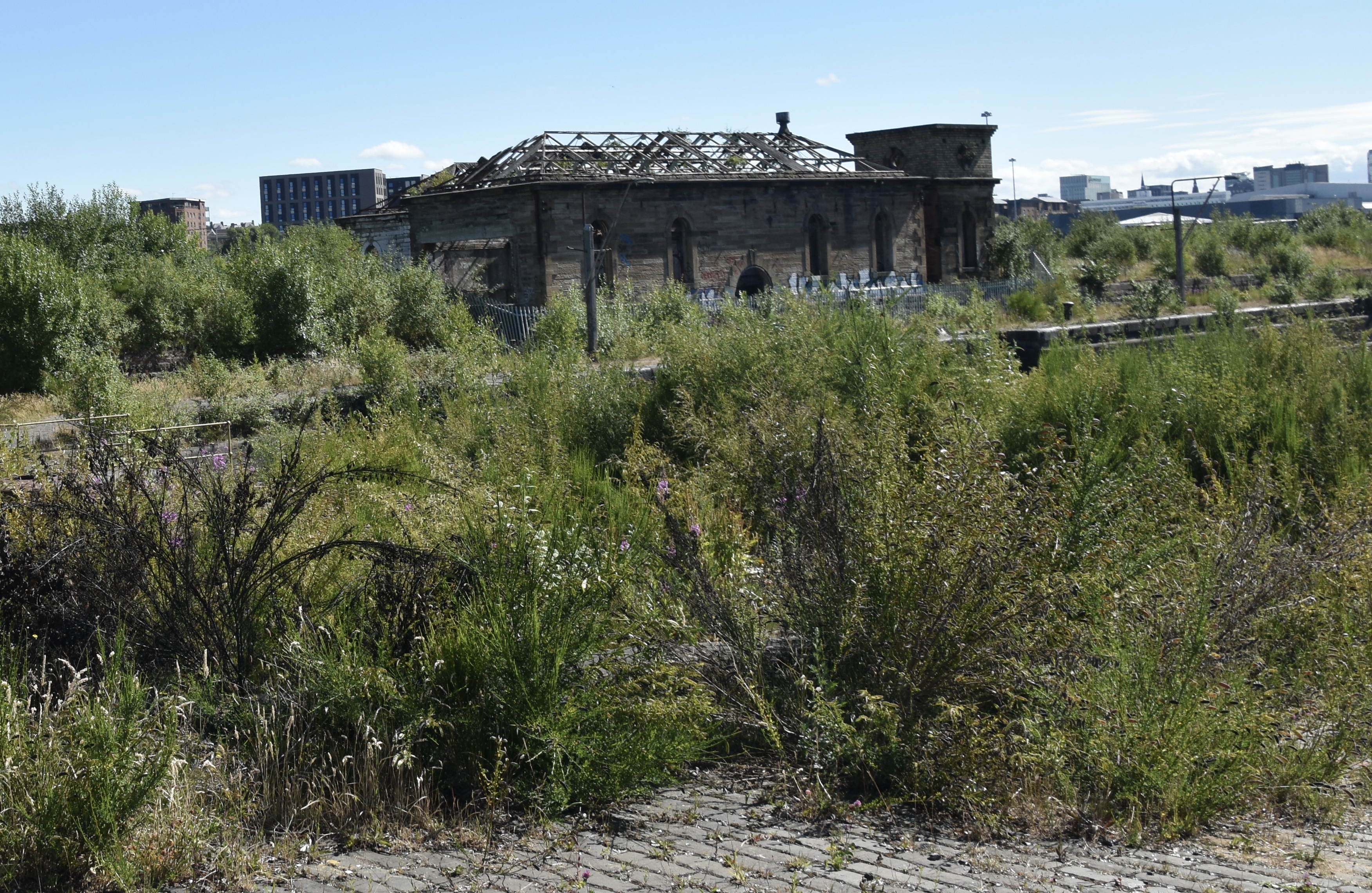
The Property Developer’s Proposal
One option for the site is to develop it for housing, offices and hotel space. New Vision – having let the site go to rack and ruin for over a decade presumably waiting for it to generate a big enough profit for them – currently have a planning application in to Glasgow City Council for a scheme that includes over 700 flats in several ten storey buildings on the site. The application was meant to have been decided a few months ago but no decision has yet been announced. There have been significant objections to the plans by the Scottish Environmental Protection Agency (SEPA) and Historic Scotland.
A postponement of the decisions by the planning committee is perhaps a good sign for those folk who want a different future for the site.
Opposing the Property Developers are The Preservationists
Clyde Docks Preservation Initiative (CPDI) are campaigning against New Vision. They have some interesting information about the company’s possibly ropey finances in their Planning History Summary. But their main concern is that despite Glasgow’s former position as a major world ship-building centre, yet Glasgow has no museum or other heritage centre dedicated to that history. Their plans are for the Graving Docks to be the focus for a maritime history development. Indeed, as they point out, Govan Docks is the only site left that could be home to such a heritage development. They have put up prize money for a competition open to architectural students to develop design concepts for a maritime park at the docks.[soliloquy id=”3501″]
Then There is the Shipbuilder’s Proposal
Ferguson Marine Engineering, a ship-building yard further down the Clyde in Greenock, have submitted a separate notice of a very different planning application for the docks. They propose re-opening at least one of the docks and using it for repairs and refits again. Currently if Scottish-based ships need repairs they have to go south to England for suitable dry docks. Basically Ferguson’s proposal would bring ships back to the Clyde again. It would also bring jobs and apprenticeships back to Govan. Ferguson also suggest that other parts of the site, which is large, could be developed by other groups for a maritime history centre and other cultural and leisure activities and possibly some of the site could be used for affordable housing. Glasgow Life reported on the proposal here.
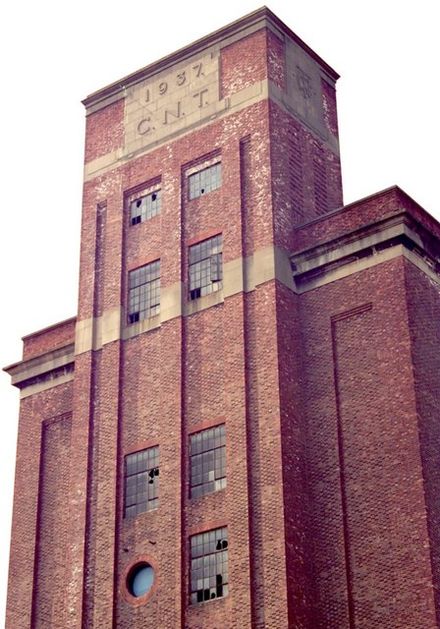
Glasgow’s Other Clydeside Developments:
There are several examples of large scale property developments which have been built on the river. The Glasgow Harbour comes to mind built after demolishing the massive and iconic Meadowbank Granary complex. By the way, it’s not a harbour by any stretch of even a developer’s imagination. The flats are nice enough, I’m sure. But they sit on their own – no shops, cafes, pubs, restaurants and cut off from nearby Partick by the busy traffic of Clydeside Expressway.
Braehead Retail Park further west on the river did have a maritime history centre in it. But the Clydebuilt Museum was closed on 16 October 2010, after Capital Shopping Centres withdrew an annual subsidy that was an original condition of planning permission for Braehead Shopping Centre. Can they do that sort of thing with no come-back? The not very memorable building is now occupied by a Krispy Kreme doughnut store which opened on 2 December 2015.
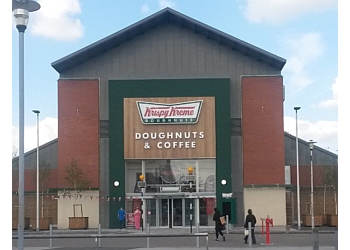
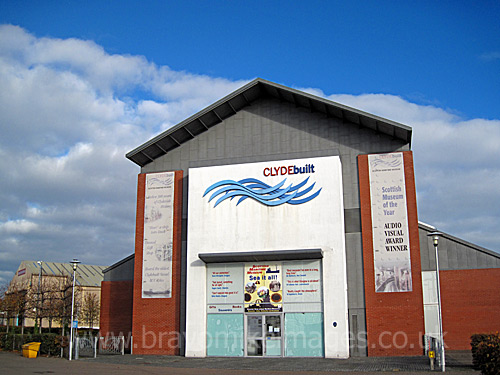
In fairness there are some very good developments along the river. But they weren’t built by property developers. They have mostly been built and funded by public concerns like Glasgow City Council, the Scottish Government, and others. The Riverside Transport Museum designed by Zaha Hadid, the Science Museum even if its tower has never opened to the public, the SECC. And the Hydro Arena though that was funded by SSE, formerly Scottish & Southern Energy. There is a new small private development just opened immediately across the river from the Graving Docks. It’s a distillery and it’s based the renovated Pump House for the now filled-in Queen’s Docks. It’s a smashing building. And it could be twinned with the Graving Docks Pump House if it were to be similarly renovated.[soliloquy id=”3528″]
What I Think
It seems a no-brainer to me. Ferguson Engineering can get some of the docks up and running again and they are signalling that they would work with other groups, like CDPI, to develop other parts of the site.
The Graving Docks could be the site for a reopening of a heritage centre like Clydebult but much, much better.
What is Glasgow City Council’s role for Govan in all this?
The Council have a clear concern to provide good housing for the city. Good office accommodation. Good hotels. Good leisure facilities. Attracting good jobs. It must be a thankless job at times and I appreciate the people who stand for the Council.
Govan is a part of the city that has seen much of it’s main employers – in engineering and ship-building – close down over the years. BAE Systems is there in the old Fairfield Shipbuilding Yard and there’s a small heritage centre about Fairfields. Harland Wolff Shipyards used to stretch right along the Govan waterfront. All gone now and replaced by social housing in the 70s.
During my walk round the Graving Docks I got talking to a local man who worked in a small car repair shop next to the graving docks. I asked him what he thought about the various proposals for the site. He knew about them, he’d gone to the public meetings about them. His view was that anything would be better than how the site is just now. He also said that people need good housing and he’d try to buy a flat if any were built on the site. Clearly the Council will regard his needs and those of other Govan folk as very important. So let’s build good affordable housing stock on part of the dock site, houses that chap can afford to buy and will appreciate living in. But is he right in saying that anything is better than the current derelict state of the docks? I don’t think so.
The city’s motto is “Let Glasgow Flourish” and the current informal motto for the city is “People Make Glasgow”. There could be a third motto along the lines of “Looking After Glasgow’s Heritage.” A century and more ago Glasgow’s philanthropists, some of them Govan shipbuilders like William Pearce and John Elder, gave money for parks and libraries and community halls. These days not so much. If our Council doesn’t look after our city’s heritage, who will?
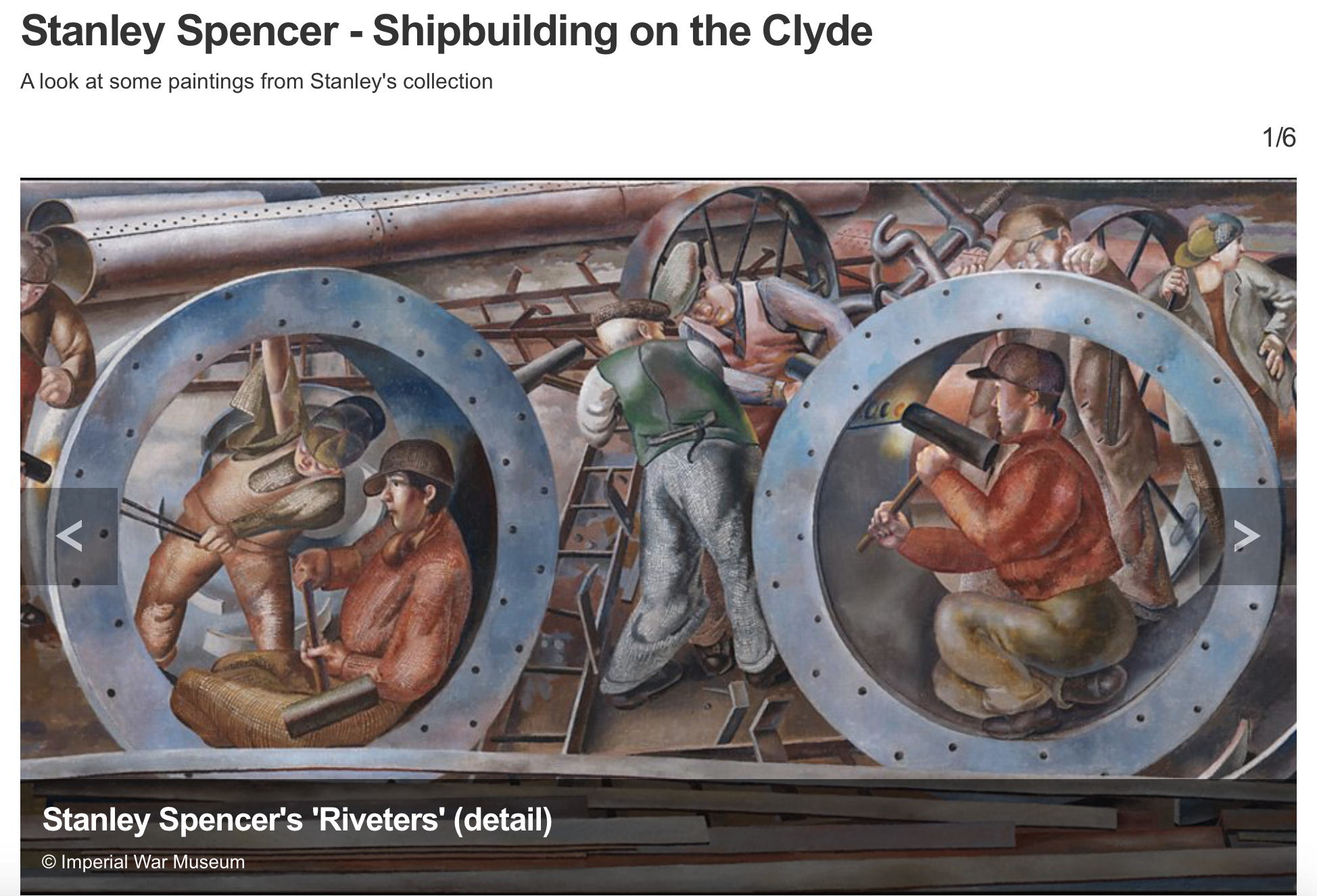 We have an industrial heritage and ship-building was at the heart of it. During WW2 Stanley Spencer, the UK official War Artist, spent time in our shipyards drawing the men and the ships. We have a heritage of social history associated with the shipyards as those of us old enough to remember Jimmy Reid know. We have an architectural heritage. Glasgow City Centre is a great Victorian and Edwardian building development. It’s also the home of Charles Rennie Mackintosh and we know just how his legacy has nearly been lost in two fires at the School of Art.
We have an industrial heritage and ship-building was at the heart of it. During WW2 Stanley Spencer, the UK official War Artist, spent time in our shipyards drawing the men and the ships. We have a heritage of social history associated with the shipyards as those of us old enough to remember Jimmy Reid know. We have an architectural heritage. Glasgow City Centre is a great Victorian and Edwardian building development. It’s also the home of Charles Rennie Mackintosh and we know just how his legacy has nearly been lost in two fires at the School of Art.
Lachlan Goudie is a Scottish artist and TV presenter. He has made documentaries about some of Glasgow’s heritage. He presented the BBC documentary about Stanley Spencer’s Clydeside paintings, some of which are in the Riverside Transport Museum. He’s had a recent exhibition of his own paintings done in Scottish shipyards.
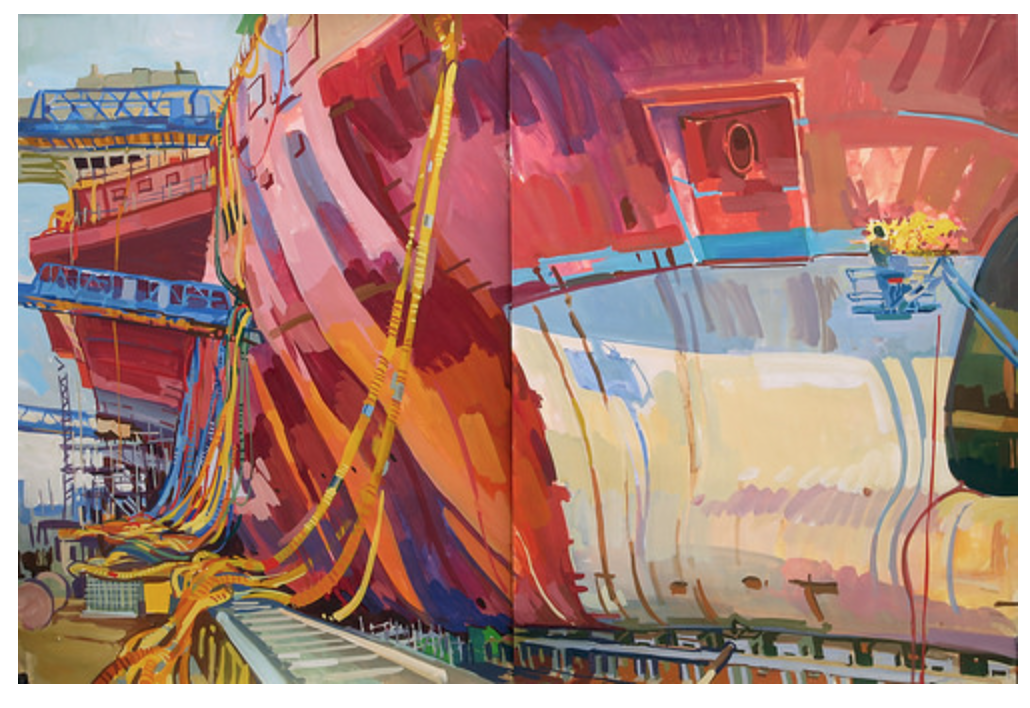
His latest programme is a BBC documentary called “Charles Rennie Mackintosh: Glasgow’s Neglected Genius”. It’s somewhat telling that Mackintosh, a world-renowned architect, can be described as being neglected by his home town. At the end of the programme, Lachlan Goudie makes a telling comment. He is standing beside the Clyde, somewhere near Pacific Quay, looking at the riverside buildings opposite and he says this:
“But in Glasgow, even in his worst nightmare, Mackintosh can’t ever have imagined that the future would look like this. …. Mackintosh was all about designing buildings that learnt something from their environment, learnt something from the history and context of the place in which they were built .
And here we are at the very heart of Glasgow, by the Clyde, the river that gave Glasgow its identity, its pulse, its history and its future. And it’s a desolate wasteland of the most incompetent architectural carbuncles These are homes for people and they just look like bits of space junk that have been deposited here. This is the Glasgow style of today and I think Charles Rennie Mackintosh would be deeply disappointed.”
So Dear Councillors of this Dear Green Place, remember your Victorian and Edwardian predecessors, remember the shipyards and the men who worked in them, remember Mackintosh your neglected architectural genius – and most of all remember to build in a way that learns from our environment, from our city’s history and from the context of the places where you are building. And most of all, apply all that to Govan Graving Docks. Even derelict, it is still a hauntingly striking place. Have a look at this video and just imagine how you could honour its history and its heritage.
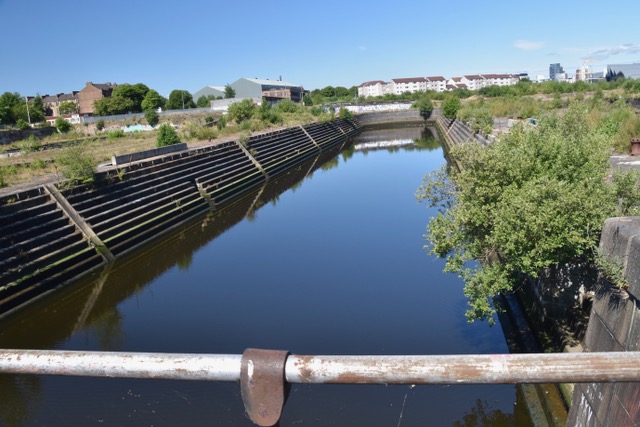


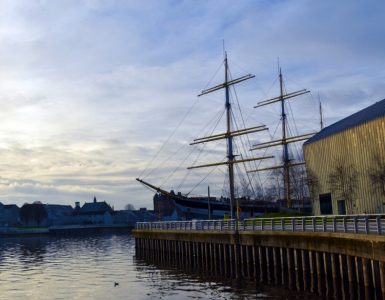

Add comment